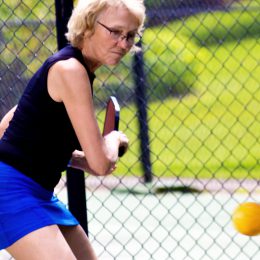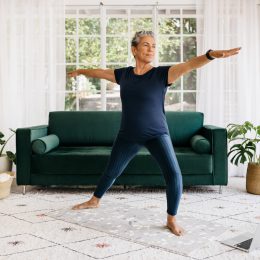The top 5 questions about stretching

Stretching seems pretty simple: Strategically reaching with your body helps retain flexibility and range of motion. But when you actually do it, some questions quickly arise.
When do I stretch?
Stretching should be done before and after your workout. However, the kinds of stretches will be different. There are two types of stretching: dynamic and static.
Dynamic stretching is stretching as you are moving. This type of stretching should be done before working out because it begins to warm up the muscles with a lower risk of strain. An example of this would be lunging from side to side before a run.
Static stretching is used to stretch the muscles while at rest. The best time to perform static stretches is after your workout: Once muscles are warm, ligaments and joints are more elastic. Static stretches should be done daily and can help prevent injury. An example of this would be bending the knee, bringing the top of foot towards buttocks in order to stretch the quadriceps muscle group.
How long do I need to stretch?
The National Academy of Sports Medicine recommends holding a static stretch for about 30 seconds to achieve better flexibility. However, adults older than 65 should hold the stretch for up to 60 seconds to achieve the same benefit. Holding a stretch any longer has not been proven to provide any greater benefits. A warm-up consisting of dynamic stretches should be between five to 10 minutes.
What if I have a lower back injury?
Stretching significantly can increase your flexibility, improve posture and reduce back pain.
Usually people with lower back injuries also have tight hamstrings. Therefore, you must be mindful when stretching each of these muscle groups. Be aware that any forward bending will put more strain on your lower back if you don’t engage your core (pull your abs in).
Try to avoid stretches like touching your toes. Instead, straighten each leg out on a stool, chair or stair, depending on flexibility. And always start with bent knees. Don’t let this discourage you as you will progress much more quickly and without further injuries.
Also, you will want to avoid stretching that involves any rotating. Instead, try reaching one arm overhead and to the side to get a nice oblique stretch.
Last, a very simple stretch to help elongate a compressed low back is to simply lie on your back and draw your knees to your chest. Try to keep your head on the mat and press your sit bones into the mat. This is a great one to do when you first wake up and before bed.
Subscribe to our newsletter
It's quick and easy. You could be one of the 13 million people who are eligible.
Already a member? Click to discover our 15,000+ participating locations.
Follow Us
What if I have limited range of motion?
Many older adults have limited range of motion due to injuries, arthritis or general wear and tear. These individuals should not avoid stretching. In fact, they need it more than others because strengthening the muscles surrounding the joints will provide them more support.
The best way to deal with limited range of motion is to use assists like straps or blocks. This way you will avoid putting any additional strain on your muscles and joints while still maximizing the stretch. Using assists will also allow you to focus on alignment, which will keep your joints safe.
Can I really improve my flexibility?
Yes! But not everyone was born to be a ballerina. Stretching is about balancing strength with flexibility.
The path to flexibility is a journey. It cannot be forced or achieved in a week. Instead, it’s something you can increase little by little by being consistent and listening to your body.
Many athletes approach stretching like weight lifting: “Go big or go home.” But the opposite approach will prove to be the most successful. Be patient, maintain proper alignment, breathe, and soon you will find new lengths and reach new heights.





